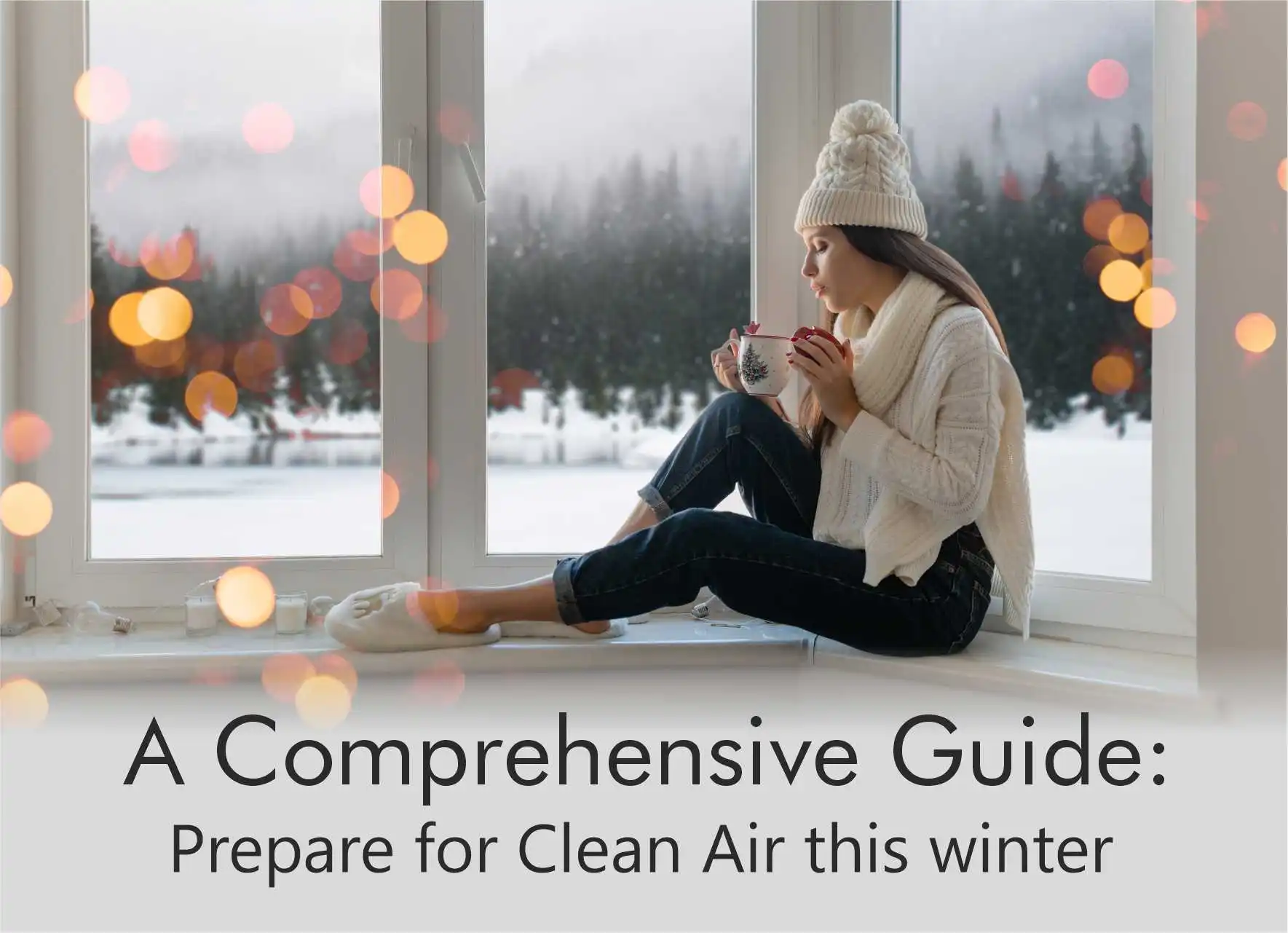A Comprehensive Guide: Prepare for Clean Air This Winter
05 Oct 2024
As winter approaches, the need for indoor air quality management becomes increasingly critical. With the arrival of colder temperatures, homes are sealed to retain heat, leading to a significant reduction in natural ventilation. This situation can worsen indoor air pollution, which is linked to several health issues, including respiratory problems, allergies, and even cardiac health decline. Therefore, proactive measures should be undertaken well before the cold weather sets in to ensure a safe and healthy indoor environment.
Understanding Indoor Air Pollution
Indoor air pollution is caused by a multitude of sources, including volatile organic compounds (VOCs) emitted from household products, smoke from kitchen areas, mold growth due to humidity, pet dander, and particulate matters (PM2.5).
During winter, the use of heating systems can further intensify these problems by circulating pollutants throughout the home. As the World Health Organization (WHO) finds out in its report that indoor air can be up to five times more polluted than outdoor air, it is essential to make awareness about this problem.
Why Indoor Air Pollution Worsens in Winter, especially in India:
In India, winter conditions intensify the challenges of indoor air pollution due to several interrelated factors. During winter, particularly in northern regions, temperature inversions can be one of the key factors contributing to the deterioration of outdoor air quality. It traps pollutants close to the ground, preventing their spreading into the atmosphere.
• Increased Use of Heating: Many families rely on traditional heating methods, such as burning wood, which releases significant amounts of smoke and particulate matter. It allows these pollutants to accumulate indoors with limited ventilation.
• High Indoor Humidity: In certain regions, winter months can bring increased humidity, particularly in areas where there is lack of sunlight. The excess amount of moisture provides sprouting ground for mold growth, contributing to poor indoor air quality.
• Dust and Allergens: In winter, dust storms are common in some areas of India. This leads to increased dust accumulation inside homes, exacerbated by reduced cleaning frequency during colder months. The dust can contain various allergens, which can affect respiratory health.
• Concentration of Pollutants: The sealing of homes to retain heat reduces air exchange, which leads to a concentration of indoor pollutants. In urban areas, where outdoor pollution is high, this can result in an even more significant deterioration of indoor air quality.
Steps for Effective Preparation:
To combat indoor air pollution effectively, it is essential to initiate an efficient approach to preparation. Here are several key steps:
Improve Ventilation: While winter conditions limit natural ventilation, it is vital to facilitate air exchange when possible. This can be achieved by opening windows for brief periods, using exhaust fans in kitchens and bathrooms, and installing energy recovery ventilators (ERVs) that allow for fresh air intake without significant heat loss.
Use Medical-Grade Air Purification System: Instead of going for an ordinary air purifier for home, invest in medical-grade air purification system that can filter out fine particles, allergens, and some pollutants. Options in the marketplace are unlimited and those too at affordable rates. But don’t settle for the cheap product when it comes to protecting your family from indoor pollutants during the winter season. Select the model that is appropriately engineered for the rooms where they will be used and has all the latest filtration technologies.
PetriMed CA Air Purification System (APS 400) has gained immense popularity among some consumers and large organizations in a short period of time, just because of its technology and filtration efficiency.
Monitor Humidity Levels: Maintaining optimal indoor humidity levels (between 30% and 50%) is crucial for preventing mold growth and minimizing dust mites. Use hygrometers to monitor humidity levels and consider dehumidifiers in areas prone to moisture, such as basements or bathrooms.
Select Low-VOC Products: When purchasing household products, opt for low-VOC or VOC-free alternatives. This includes paints, cleaning supplies, and furnishings. Ensuring good ventilation during and after their application can also help minimize their impact on indoor air quality.
Regular Cleaning Practices: Establish a thorough cleaning routine that includes dusting, vacuuming with HEPA-filtered vacuums, and washing bedding regularly. This practice helps reduce dust, pet dander, and other allergens that contribute to indoor air pollution.
Educate Household Members: Raising awareness about indoor air quality and its impacts among all household members is essential. Encouraging practices such as removing shoes at the door, avoiding smoking indoors, and limiting the use of synthetic fragrances can foster a healthier environment.
Conclusion
As winter approaches, the preparation for combating indoor air pollution is not only a necessary task but an urgent responsibility. In India, where specific winter conditions can worsen air quality, understanding and addressing these issues becomes paramount. By recognizing the sources of indoor air pollution and implementing effective strategies, individuals can significantly enhance the air quality within their homes.
Proactive measures taken now can lead to a healthier living environment, safeguarding the well-being of all occupants throughout the cold months ahead. Prioritizing indoor air quality should be an integral part of winter preparation, ensuring a haven against the harsh conditions outside.
